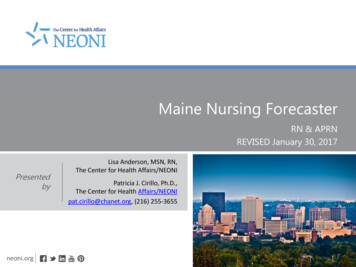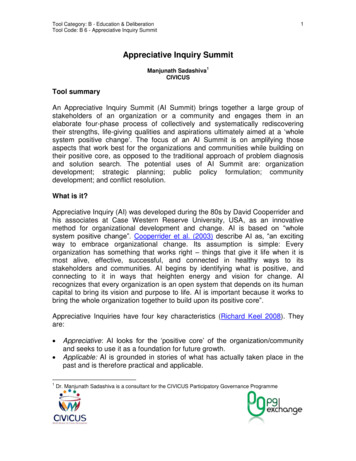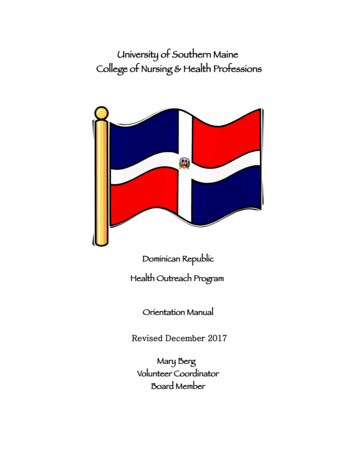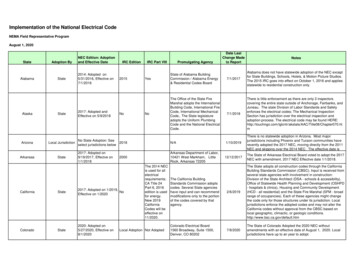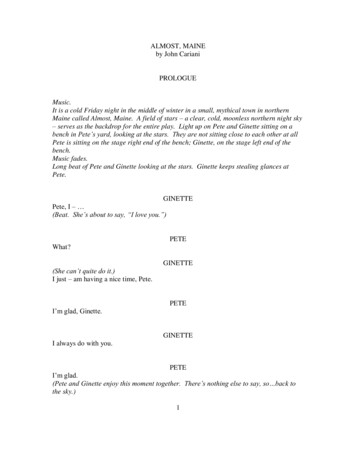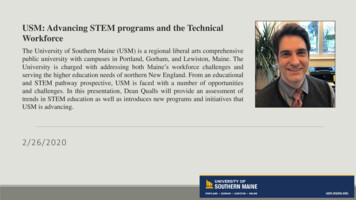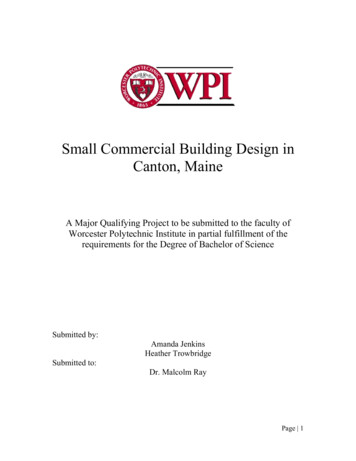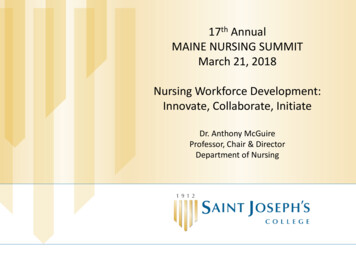
Transcription
17th AnnualMAINE NURSING SUMMITMarch 21, 2018Nursing Workforce Development:Innovate, Collaborate, InitiateDr. Anthony McGuireProfessor, Chair & DirectorDepartment of Nursing
The new Maine Medical Center/St. Joseph’sBSN cohort will be used as an exemplar. At the conclusion of this presentation,participants will be able to:– Discuss innovation in the context of increasingthe nursing workforce.– Describe the importance of key collaboration tosolve workforce development challenges.– Propose a plan to initiate innovative workforcedevelopment ideas with identified criticalstakeholders.
Change the Status QuoInnovateCollaborateInitiate
Innovation is important! What is it? Difficult to define Challenging Easily recognizedPablos HomanFuturistInventor,Notorious hacker
What’s Happening with Innovation? 20% of Chief Executives believe innovativeinvestments do not pay off. Approximately 30% of change efforts aresuccessful.Perhaps theorganizational structuresneed to splice thecultural DNA andadd a ges/insight-low-risk-innovation-costly.aspx?c mc prposts 10000040&n otc 1013
Invite Innovation Encourage people to bring forth theirnew ideas:– Center for Nursing Innovation– Omni Meetings– AACNExemplar: Leadership at the College, the State,& national organizations present the opportunity toImprove the nursing shortage and nursing facultyshortage.
Think differentUse Pablos’s Hacker strategy! Analyze the current process: What are the vulnerabilities? Consider the opportunities forchange. Brainstorm without judgment: List the worst ideas Attempt to correct whatis “wrong” with the idea Approach the issue with anopen vulnerability.
Beth Israel Hospital, Brooklyn early 1940s
Maine’s Nursing WorkforceYears ofExperience0-1011-2021-3031-4041 sing/Maine%20Nursing%20Infographic 10.4.17.pdf
Issues in Maine Assessment of the Maine nursing workforce issues are clear andhave been presented many times over a period of years:––––Aging nurses leading to severe deficitFewer Nursing FacultyClinical PlacementsMoney challenges (tuition expensive, agency onboarding expensive) Other factors– Agency-Academic disconnect Nursing started in hospitals and moved to a collegiate environment Widely recognized that agency-academic partnerships are critical for learning– Individuals that are already in workforce have specific needs Flexible study Shorter programs Support from employers
Challenge Increase theenrollment– Each school by10%
CollaborateStakeholders:Agency LeadersOther Nursing SchoolsGovernmental AgenciesProfessional OrganizationsStudentsPotential students
Effective Collaboration Be confidentFlexibility (will need to work around busy schedules)PersistListenOffer somethingDiversify your knowledge– (i.e. other industries, music, sports, travel widely) Integrate work streams Think differently—negotiate, make concessions– Choose your battles carefully Expect rejection and failure---build on them
Initiate Overcome Fears Failure Discomfort-vulnerable Conflict Hidden “Holy Grails”
Encourage failure– Test fast– Fail fast– Do over
“Man who says something cannot be done should not get in the way of man who is doing it”Confucius
Thank you!QuestionsDiscussion
Assessment of the Maine nursing workforce issues are clear and have been presented many times over a period of years: – Aging nurses leading to severe deficit – Fewer Nursing Faculty – Clinical Placements – Money challenges (tuition expensive, agency onboarding expensive) Other factors – Agency-Academic disconnect Nursing
